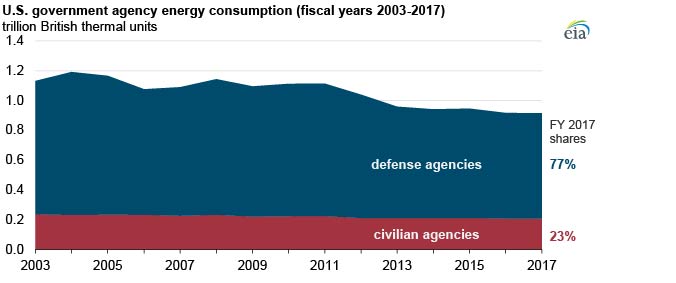
The U.S. federal government consumed 915 trillion British thermal units (Btu) of energy during the 2017 fiscal year (FY), or 20% less than a decade before. The slight decline in FY 2017 marks the fifth consecutive decline in annual federal government consumption. Consumption by defense agencies accounted for more than 75% of total government energy consumption, according to data compiled by the Federal Energy Management Program (FEMP).
Defense agency energy consumption declined 0.2% from FY 2016 to FY 2017, while civilian agency energy consumption declined 0.4% during the same period. In the past decade, defense agency energy consumption has fallen 18% (compared with FY 2007), and civilian agency energy consumption has fallen 8%. Over the years, several Executive Orders (for example, EO 13834) directed federal agencies to improve the energy and environmental performance of government buildings, vehicles, and overall operations.
Most of the federal government’s energy use is for vehicles and equipment, which accounted for 568 trillion Btu, or 62% of total energy consumption, in FY 2017. The jet fuel that defense agencies use is the primary driver of government vehicle and equipment energy consumption. The 509 trillion Btu of fuel consumed by defense agencies represents 90% of total government vehicle fuel consumption.
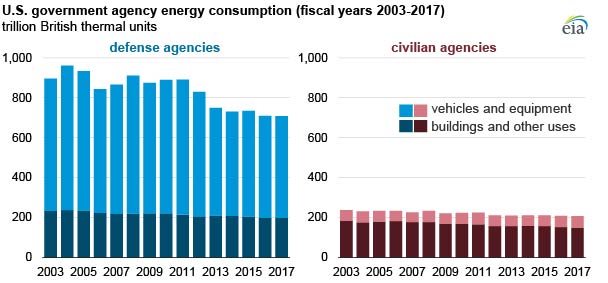
Among civilian agencies, the U.S. Postal Service (USPS) consumed the most energy in FY 2017, at 44 trillion Btu. More than half of the energy USPS consumed was for vehicle fuel. The U.S. Department of Veterans Affairs and U.S. Department of Energy ranked second and third, respectively, each consuming about 29 trillion Btu.
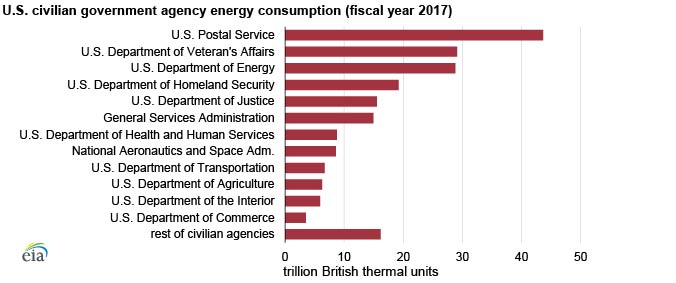
Government expenditures for energy in FY 2017 totaled $15.6 billion. Similar to their energy consumption share, defense agencies accounted for more than 75% of government energy expenditures. Defense agency energy spending is mostly for vehicles and equipment ($8.6 billion of the $11.9 billion total), and civilian agency energy spending is mostly for buildings and other uses ($2.7 billion of the $3.7 billion total).
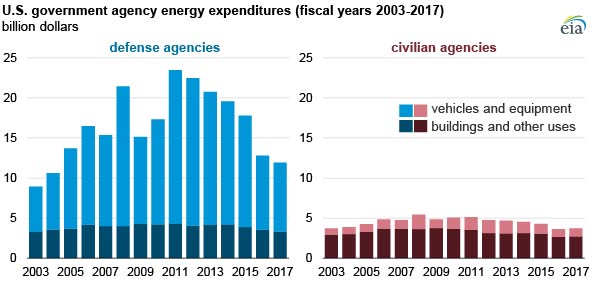

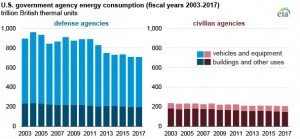
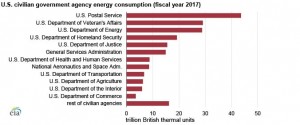
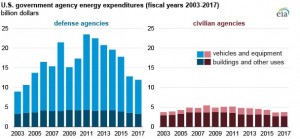
Follow us on social media: